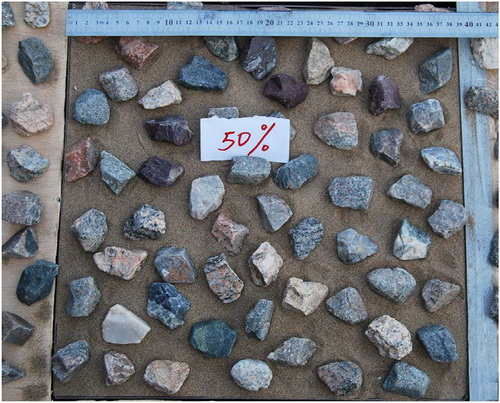The Effect of Roughness Density of Gobi Beds on the Entrainment of Sediment by Wind Revealed
Updatetime:2019-07-02From:
【Enlarge】【Reduce】
Gobi is located mainly in strong wind areas, which is a major source of dust storms in northern China with severe damages caused by the intense wind-blown sand.
However, few studies have investigated the effect of roughness density of gobi beds on aeolian sediment entrainment. Therefore, knowledge on the entrainment of sediment from gobi by wind is significant for the protection of towns and engineering facilities from wind-blown sand disasters.
Recently, a research group from Northwest Institute of Eco-Environment and Resources (NIEER) of the Chinese Academy of Sciences measured two parameters by using a wind tunnel experiment to quantitatively evaluate the role of roughness density in aeolian sediment entrainment from gobi.
This wind tunnel study quantitatively evaluates the effect of roughness density λ on aeolian entrainment from gobi beds with λ of 0.05–0.51 using Rt and RQ. Rt refers to the ratio of the entrainment threshold for a bare sand bed to those of gobi beds; RQ is the entrainment rate ratio, whose calculation is just reversed with Rt.
The result indicates that a two-to five-fold increase in entrainment threshold and 41.4–100% of entrainment rate is attenuated within an experimental friction velocity (u*) range of 0.40–0.63ms-1.
Moreover, the variation of RQ with λ is almost negligible, as λ reaches 0.176, 0.203, 0.313, and 0.375 for u* values of 0.40, 0.49, 0.54, and 0.63ms-1, respectively, which are specific for the Gobi Desert with their typical gravel beds.
This study also indicates that for higher u* of 0.54 and 0.63ms-1, aerodynamic entrainment plays a significant role in aeolian entrainment, whereas at lower u* of 0.40 and 0.49ms-1, splash entrainment exerts a greater impact.
The results of this study will improve the understanding of the effect of gobi roughness density on aeolian sediment entrainment and will provide guidance for better application of artificial gobi beds to combat wind-blown sand disasters in arid regions.
The study entitled “The effect of roughness density of gobi beds on the entrainment of sediment by wind: A wind tunnel study” was published in Journal of Wind Engineering & Industrial Aerodynamics.

Gravels with a length of 4 cm used in the wind tunnel experiments (Image by TAN Lihai)
Contact:
TAN Lihai
E-mail: tanlihai09@hotmail.com
Key Laboratory of Desert and Desertification, Northwest Institute of Eco-Environment and Resources, Chinese Academy of Sciences, Lanzhou 730000, China.
Appendix




